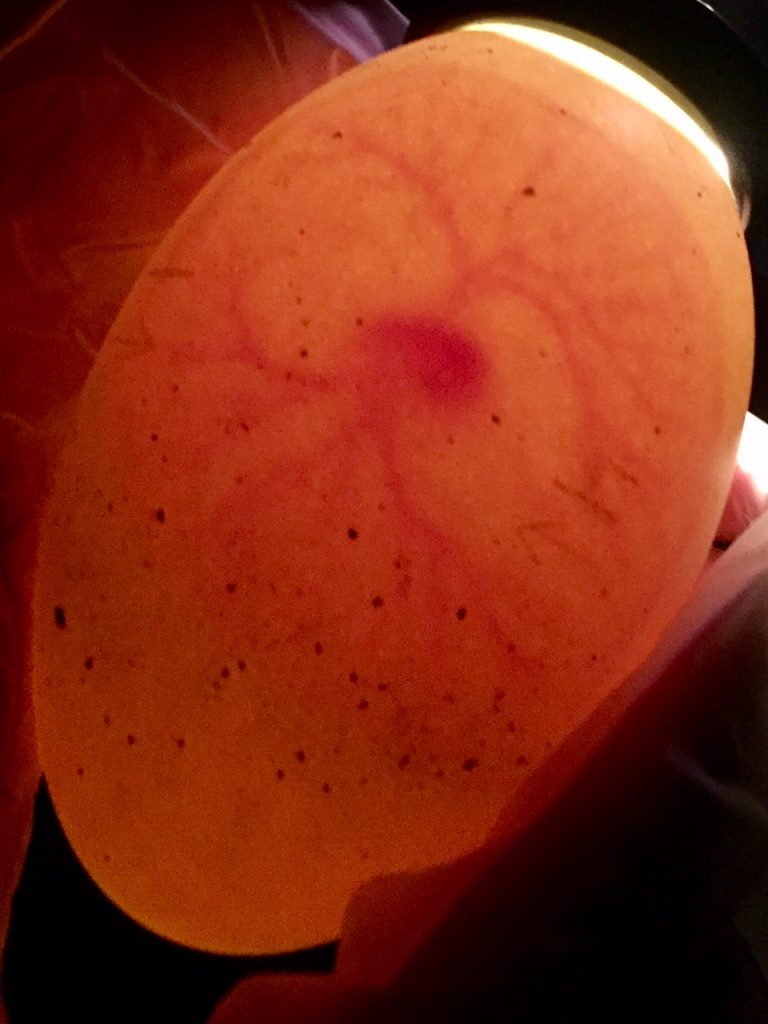Breeding season is well underway at the San Diego Zoo Safari Park’s California Condor Breeding Facility!
California condors can lay their eggs anytime from January through April. So far, six eggs have been laid – the first one on 31 January 2017. This egg was produced by one of our newer pairs, male Xol-Xol (pronounced “HOLE-hole”) and female Mexwe (pronounced “MEX-way”). Xol-Xol and Mexwe were previously paired with other birds and are proven parents. This is only their third season as a pair; last year they successfully raised their first chick together.
All six of our eggs are fertile and are incubating in our artificial incubators. The parents are currently sitting on fake eggs that we refer to as “dummy eggs.” We use a dummy egg as a type of placeholder until the real egg is ready to hatch. We need the parents to stay broody, or attentive to the nest, so that they will accept the hatching egg when the time comes. As they get closer to their due dates, we will carefully sneak the real eggs back into the nests so the parents can hatch them. We artificially incubate all of our California condor eggs in order to document embryonic development and to prepare for any eggs that may need help in hatching. It’s not that we don’t trust the condors to incubate their own eggs, it’s just much easier to check on the eggs if we incubate them instead; the parents are very protective of their eggs (as they should be!).

Candling a condor egg allows keepers to check the progress of the developing chick.
The third egg, laid on February 10, 2017, is the egg we are hoping will hatch on Condor Cam. The parents are our Condor Cam veterans Sisquoc (pronounced “SISS”-kwawk”) and Shatash (pronounced “sha-TAWSH”). Sisquoc is the male, and is our biggest condor at the Safari Park; during his last exam, he weighed in at a hefty 26.2 pounds. He can be identified by his large size and his wing tags (yellow 28). Shatash, the female, has no wing tags and is much smaller at 17.6 pounds.
Sisquoc was the first California condor ever hatched in a zoo (his egg was laid in the wild and brought to the San Diego Zoo for incubation). He emerged from his shell on 30 March 1983, and news of his hatching triggered an outpouring of mail from all over the world. Congratulatory letters were sent by conservationists, zoos, governments, school classrooms, and many individuals, all wanting to help with the condor project.
Shatash hatched at the Los Angeles Zoo, one of our valuable partners in the California Condor Recovery Program. Her father was the first condor to hatch at the San Diego Zoo Safari Park (again, from a wild-laid egg), back in 1985. Sisquoc and Shatash have been paired together since 1993—this is their 26th egg. Nineteen chicks have hatched, and Sisquoc and Shatash have raised seven of them themselves, including three chicks on Condor Cam: Saticoy, who is flying free in Southern California; Cuyamaca, who was released in Arizona; and Antiki, who is going to be part of the breeding program when she reaches maturity. The other chicks were raised by keepers, who used a condor puppet so the chicks wouldn’t imprint on their human caretakers. Sisquoc and Shatash have proven to be great and reliable parents.
California condors tend to be monogamous and share ALL nest duties: incubating the egg, brooding the chick, feeding the chick, and defending the nest. Throughout the incubation period, you will see Sisquoc and Shatash take turns sitting on the egg to keep it warm. You may see them roll or turn the egg periodically. This gentle egg movement is crucial for the development of the growing embryo. Incubation bouts can be very short—just a few minutes—or birds can sit for two or three days, so don’t be alarmed! Sometimes the parents will sit together in the nest. Condor eggs incubate at about 98 degrees Fahrenheit (36 degrees Celsius). Condors have a long incubation period; we expect the egg to “pip,” or start hatching, after 55 days of incubation.
Sisquoc and Shatash’s new egg is very valuable to the condor population. California condors are critically endangered. In 1982, they were on the road to extinction, with only 22 birds in the world. Today, through breeding programs at the San Diego Zoo Safari Park, the Los Angeles Zoo, the Oregon Zoo, and the World Center for Birds of Prey (in Boise, Idaho), as well as intensive field management in the wild, the population is up to 446 birds—of which, 276 are flying free in the wild! It’s a nice population increase, but there is still a lot of work that needs to be done. This egg, and eventual chick, represents the next step in the California condor story—and you get to witness it on Condor Cam!
Stay tuned for future weblogs with egg updates. If you have any questions about what you’re seeing, feel free to ask them in the “Comments” section at the end of this post, and we’ll do our best to provide answers. Happy viewing!
Ron Webb is a senior keeper at the San Diego Zoo Safari Park. Read his previous blog, Vulture Culture.





